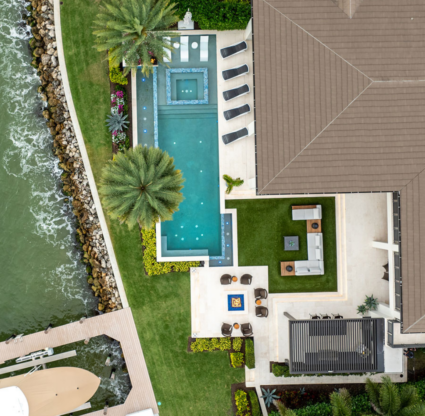The topic of local development and conservation is complex—it’s not enough to consider that 80 percent of Collier County falls within protected lands if new construction sprawls across vital habitats and sensitive areas. Still, our natural ecosystem has seen major wins, especially in recent years with emboldened support for the federal-and state-driven Comprehensive Everglades Restoration Plan (CERP). In this area, you rarely have to venture far to connect with Florida’s wild beauty. Organizations and government agencies continue to collaborate on landmark projects to promote a verdant future.
Since launching in 2003, the countywide Conservation Collier has had a major impact on preservation, with 4,664 protected acres stretching between Marco Island and Immokalee. The tax-funded plan acquires parcels of land to preserve and restore the native habitat, with more than half of these lands being open for public recreation (think: Gordon River Greenway, Freedom Park, Pepper Ranch Preserve). In February, the board approved the proposal for the largest purchase yet with Owl Hammock at 7,378 acres.
Being mindful of our natural environment is as much about preserving land as maintaining what’s there. Since 2013, Audubon’s Corkscrew Swamp Sanctuary in Naples has worked to control overgrown Carolina willows and woody vegetation to make room for the natural grass needed for a wetland to thrive. By late 2022, the Sanctuary was a year ahead of schedule in its five-year goal to restore more than 1,000 acres, where wading birds are now returning to fish-filled marshes that were once shrouded with overgrowth. Shawn Clem, director of research and interim director of conservation at Corkscrew, says wetlands are vital to Collier County’s way of life, helping manage water quality and feeding tourism and recreation. “That’s the goal of the sanctuary, is to hold on to that ecological value of ‘Old Florida,’ of the habitat that was here before we were, so that people can find their peace,” she says.
Further south, The City of Marco Island, the Florida Fish and Wildlife Conservation Commission (FWC) and the Florida Department of Environmental Protection completed the largest mangrove restoration project in the state’s history—209 acres of wetland at Fruit Farm Creek in Rookery Bay Natural Estuarine Research Preserve. And in May, the Tigertail Lagoon/Sand Dollar Island Ecosystem Restoration Project finished moving more than 600,000 cubic yards of sand on the island’s northern shore to create a coastal barrier system that protects against severe weather and natural disasters. It also re-establishes a flow channel connecting the north and south points of the lagoon to improve water quality, keeping the coastline pristine for resident shorebirds, nesting sea turtles and beachgoers.
Moving inland, the Picayune Strand Restoration Project in Naples is almost complete as part of CERP, which replenishes more than 55,000 acres of Florida wetlands by restoring historic water flows. With plugged canals, leveled roads, three pump stations to move water, engineered berms, and a levee to protect existing agricultural and residential lands from flooding, the project feeds parched wetlands, improves water quality and restores the balance in Florida Bay. The fruits of labor are already evident: At the Merritt Pump Station, completed in 2014, the spreader basin teems with Florida panthers, alligators, deer, cormorants, great blues and white pelicans in winter. “All the scientists and field researchers want to work at Merritt because you can see the restoration working—it’s full of birds,” says lead project manager Joanna Weaver of South Florida Water Management District. “Give it three years and Faka (Union Pump Station, completed in 2021) will be the same.”





